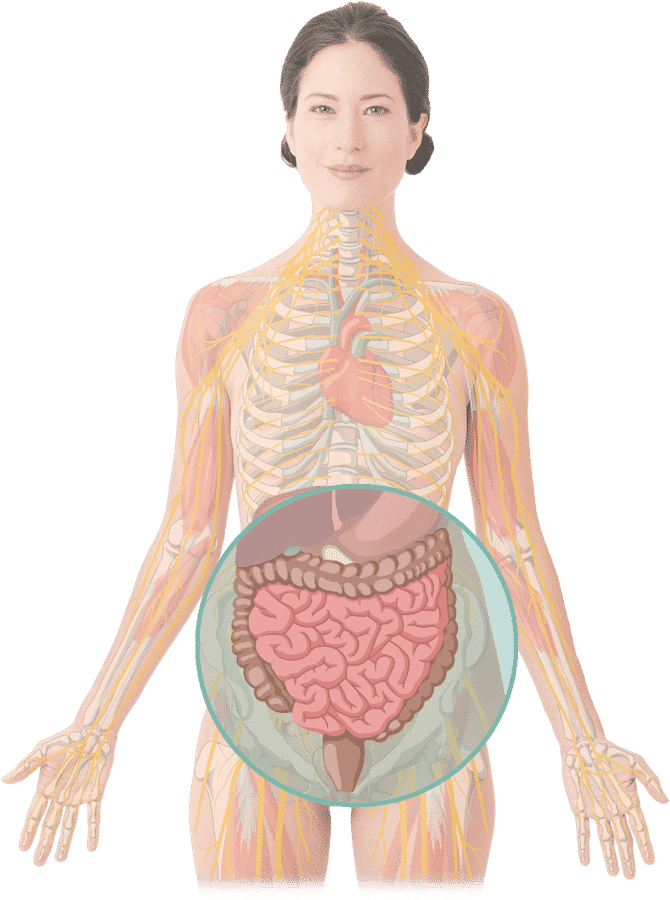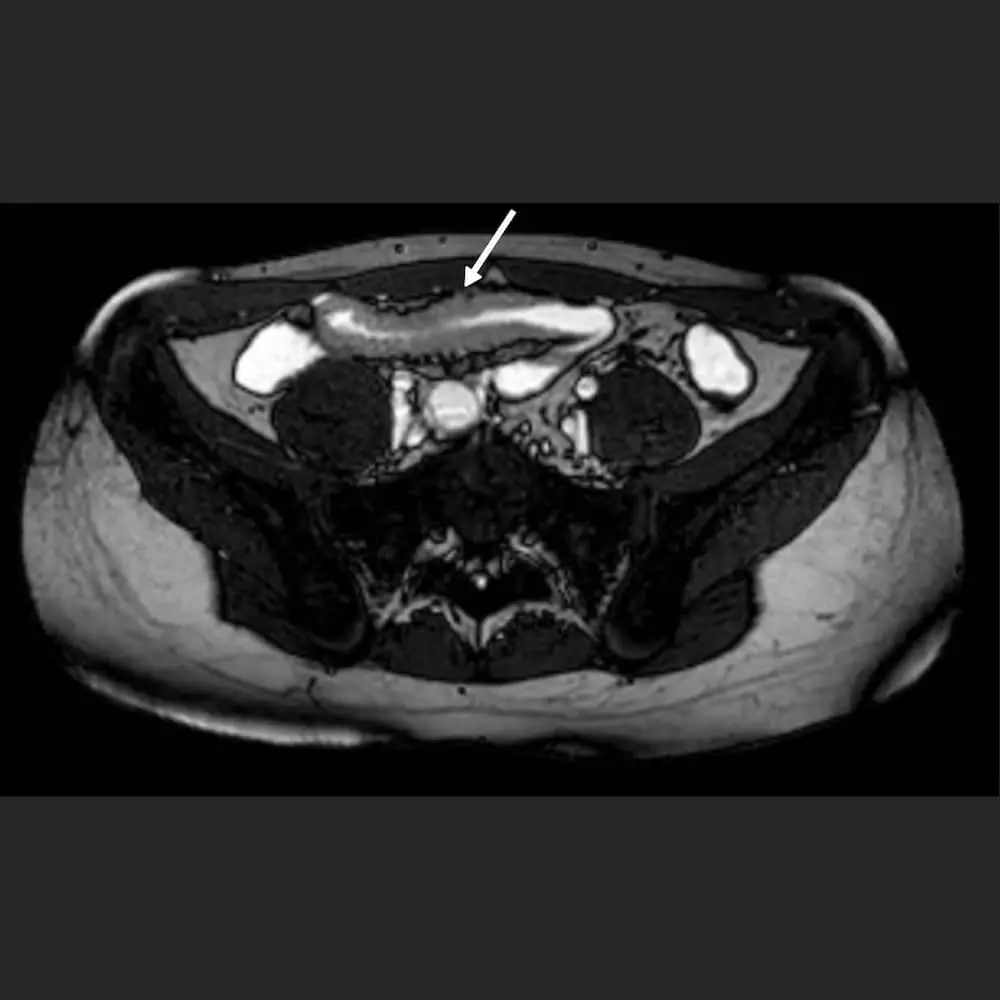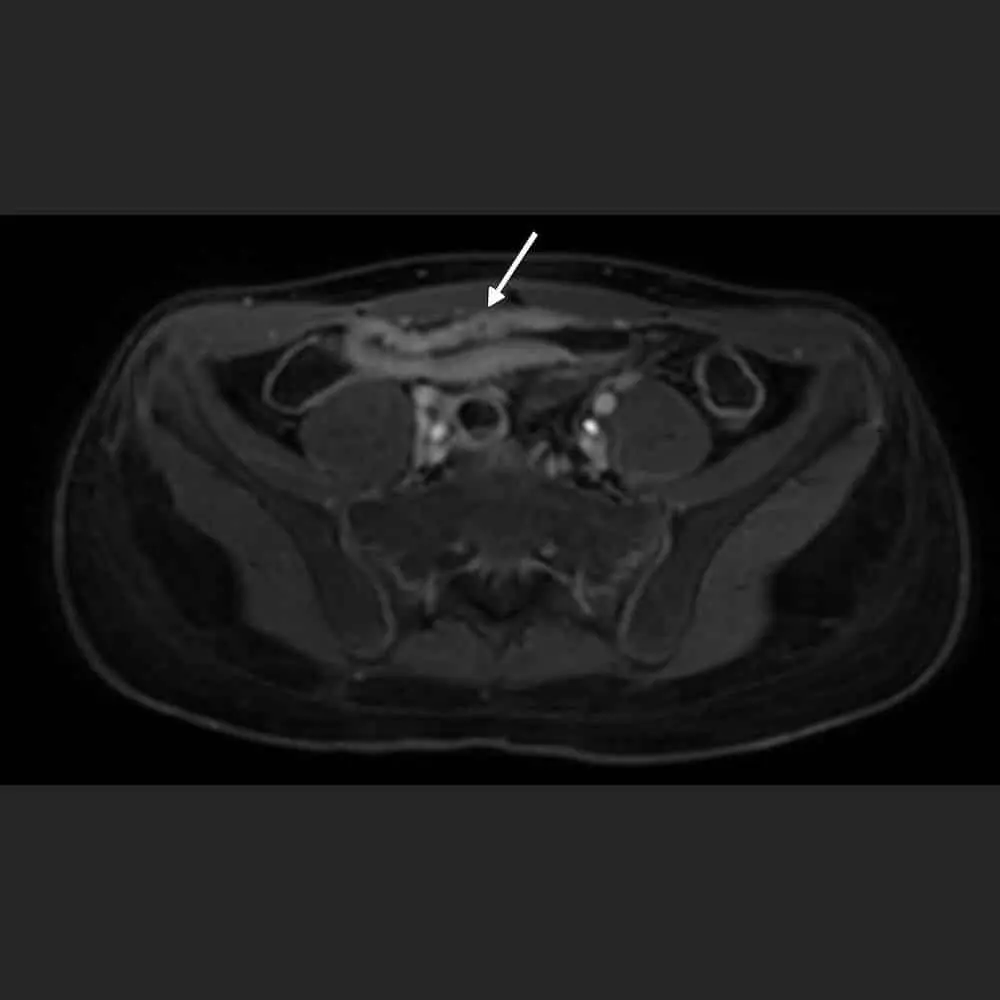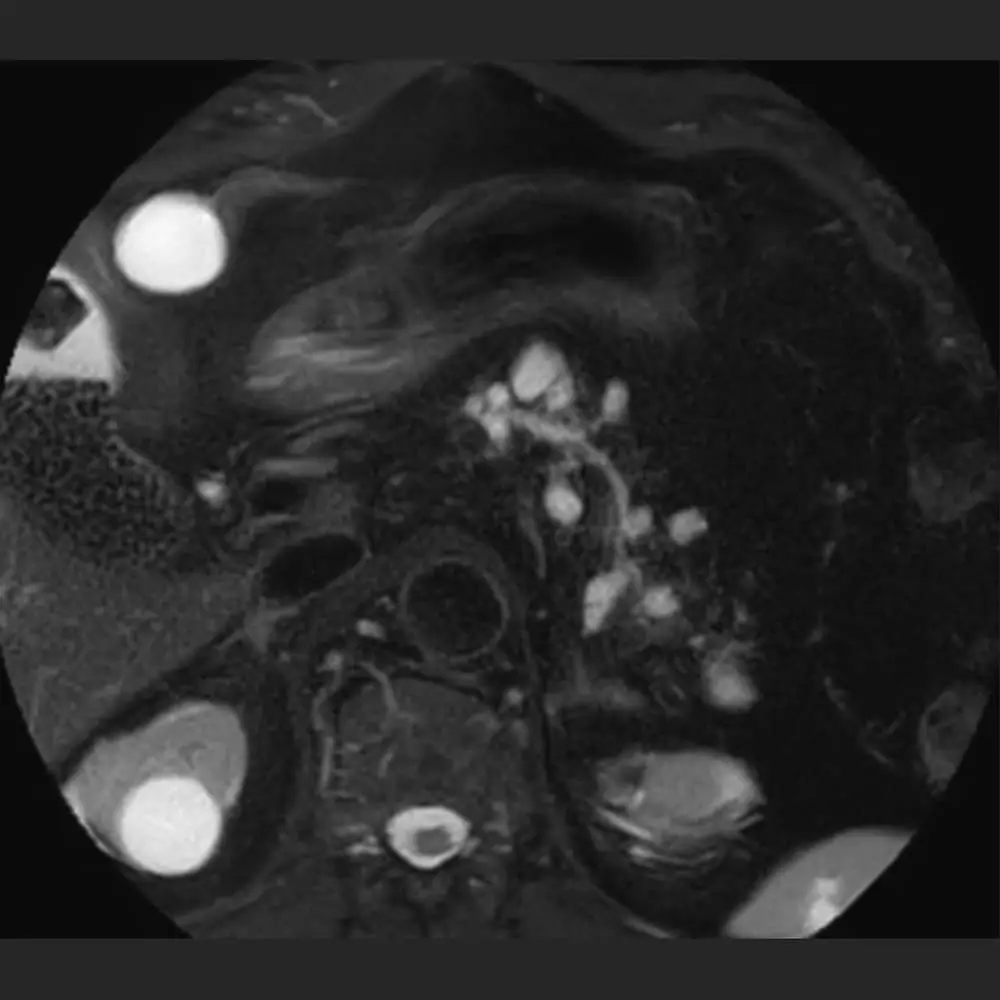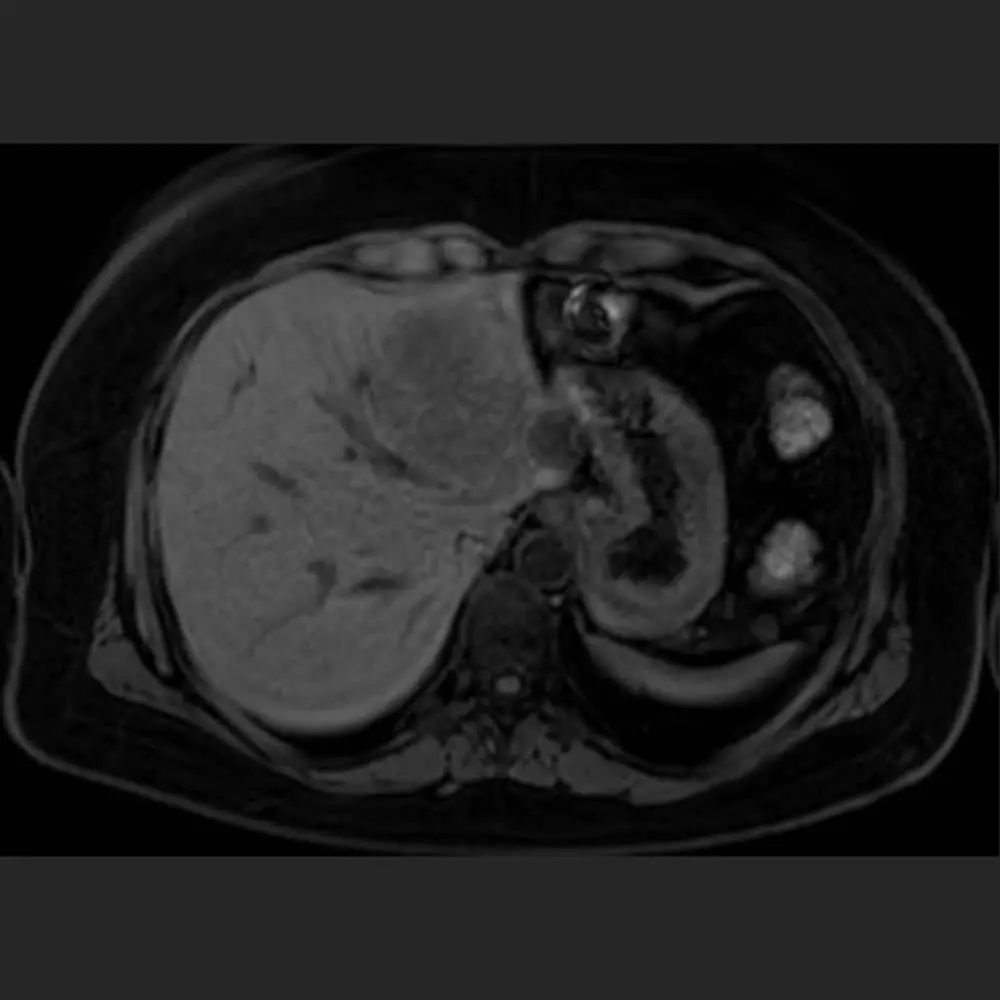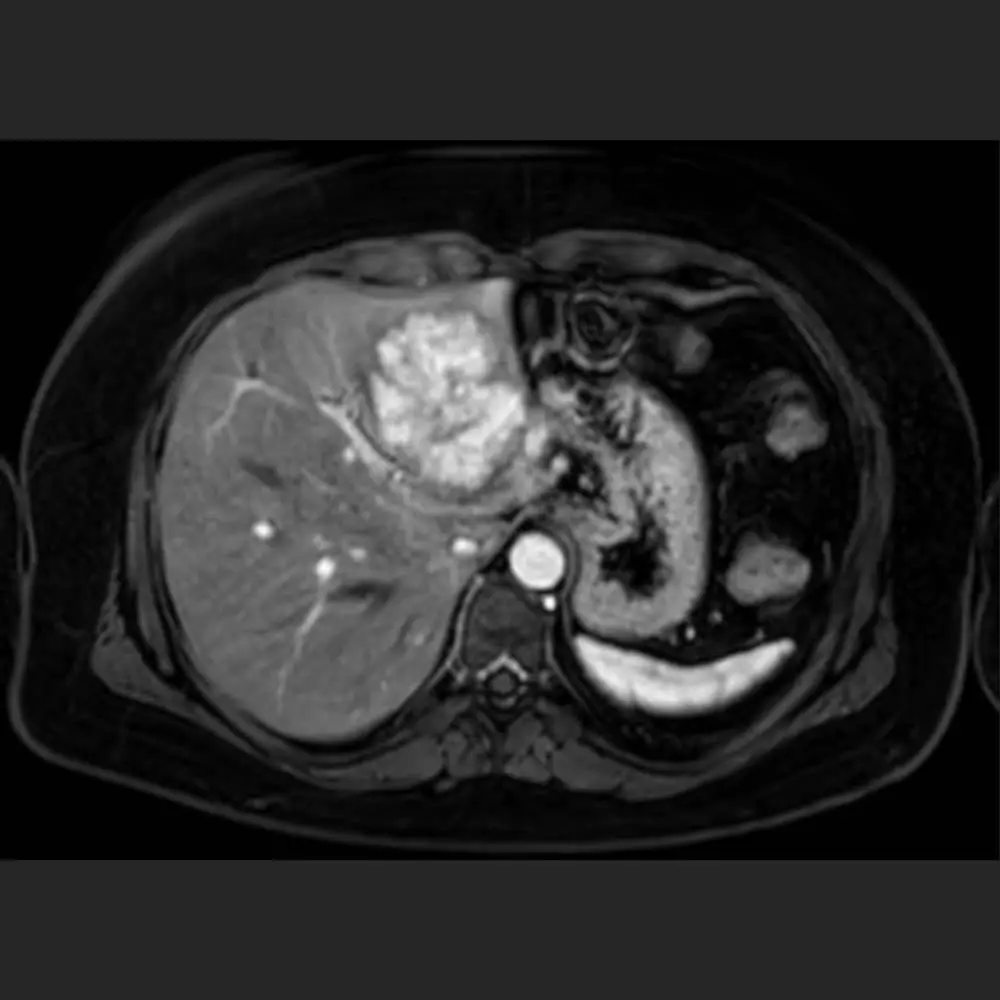The mid-abdomen is not precisely delineated and covers approximately the area around the navel. Together with the lower abdomen, it includes the large and small intestines, the appendix, the kidneys, the pelvic viscera, and the urinary bladder. Suppose there is a suspicion of inflammatory processes in and around the intestine. In that case, radiology usually focuses on this area during MRI.
In women, the lower abdomen includes the uterus with fallopian tubes and ovaries. If there are complaints in this area, a gynaecologist will typically prescribe a separate
MRI of the lower abdomen to detect, for example, inflammatory changes, endometriosis or gynaecological tumours.
In men, the prostate is part of the lower abdomen. An examination of the
prostate is particularly important for cancer prevention. The prostate MRI is a more comfortable and precise diagnostic procedure for patients than the classic palpation examination.
